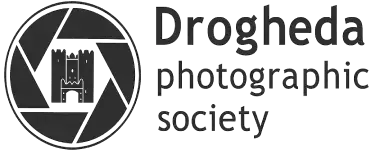Understanding ISO in Photography: A Beginner’s Guide
Understanding ISO in Photography: When diving into photography, terms like ISO, aperture, and shutter speed can feel overwhelming. But don’t worry—today, we’re breaking down ISO, one of the three pillars of exposure, in a way that’s easy to grasp. By the end of this post, you’ll understand what ISO does, how it affects your photos, and how to use it creatively. Plus, we’ll include some visual examples to make it crystal clear!
What is ISO?
ISO measures your camera sensor’s sensitivity to light. Think of it like your camera’s “eyes” adjusting to see better in different lighting conditions. A low ISO (e.g., 100 or 200) makes the sensor less sensitive, ideal for bright environments like sunny days. A high ISO (e.g., 1600 or 32000) increases sensitivity, perfect for low-light situations like indoor events or night photography.
ISO is part of the exposure triangle (along with aperture and shutter speed), which controls how bright or dark your image is. Adjusting ISO lets you capture photos in various lighting conditions without changing your creative settings too much.
How ISO Affects Your Photos
ISO has a direct impact on two things: exposure (brightness) and image quality. Let’s break it down:
1. Exposure (Brightness)
-
Low ISO (e.g., 100, 200): Less sensitive to light, resulting in darker images unless you have plenty of natural light or a slow shutter speed/wide aperture. Perfect for well-lit scenes.
-
High ISO (e.g., 800, 1600, 6400): Boosts sensitivity, making images brighter even in dim conditions. Great for indoors or nighttime.
2. Image Quality (Noise)
The trade-off for higher ISO is noise (graininess). Higher ISO settings amplify the sensor’s signal, which can introduce speckles or grain, especially in darker areas of the image. Modern cameras handle high ISO better, but noise is still a factor.
When to Use Different ISO Settings
Choosing the right ISO depends on your environment and creative goals. Here are some practical scenarios:
-
ISO 100-200: Bright sunlight, landscapes, or studio setups with strong lighting. Keeps images clean and sharp.
-
ISO 400-800: Overcast days, shaded areas, or indoor settings with decent light. A good middle ground for flexibility.
-
ISO 1600+: Low-light situations like concerts, night photography, or candlelit scenes. Be mindful of noise, especially with older cameras.
Pro tip: If you’re shooting in Auto ISO mode, your camera picks the ISO based on light conditions. It’s handy for beginners but limits creative control.
Creative Uses of ISO
ISO isn’t just about getting the right exposure—it’s a creative tool! Here are two ways to use ISO creatively:
-
Freeze Motion in Low Light: Pair a high ISO with a fast shutter speed to capture sharp images in dim conditions, like a dancer performing under stage lights.
-
Embrace Noise for Effect: High ISO noise can add a gritty, artistic vibe to black-and-white photos or moody night shots.
Tips for Mastering ISO
-
Start Low: Use the lowest ISO possible for your lighting conditions to maximise image quality.
-
Test Your Camera: Experiment with high ISO settings to see how much noise your camera produces. Newer models often handle high ISOs better.
-
Balance the Exposure Triangle: If you increase ISO, you may need to adjust aperture or shutter speed to avoid overexposure.
-
Use Post-Processing: Software like Adobe Lightroom can reduce noise from high-ISO shots, but don’t rely on it too heavily.
Conclusion
ISO is a powerful tool that lets you adapt to any lighting situation while unleashing your creative potential. By understanding how ISO affects exposure and image quality, you can make informed decisions to capture stunning photos. So, grab your camera, experiment with different ISO settings, and see how they transform your shots!
Have questions about ISO or want to share your favourite high-ISO shots? Drop a comment below—we’d love to hear from you!

